Red Trousers
What are these red trousers you keep wearing?
What’s so special about them?
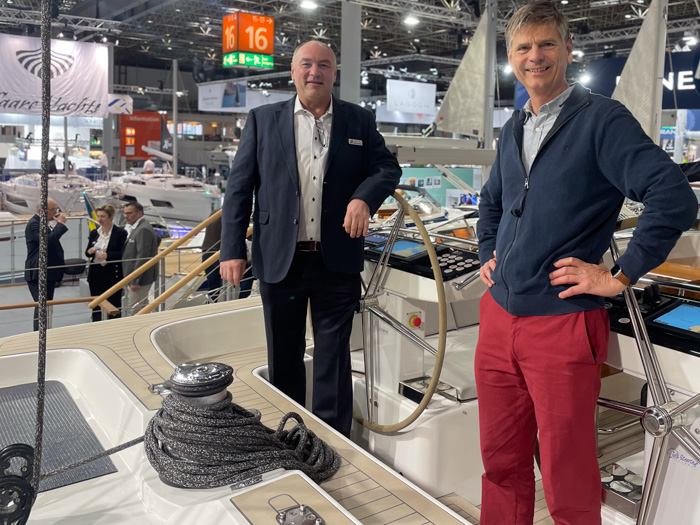
Together with Magnus Rassy onboard Hallberg-Rassy 69 at boot Düsseldorf, wearing the legendary breton red Captain Currey trousers
.
I am often asked why I keep wearing these red trousers and if that has any deeper meaning. After all, the colour for mariners most often is blue or navy, so why red? And what’s so special with exactly these pair of red trousers?
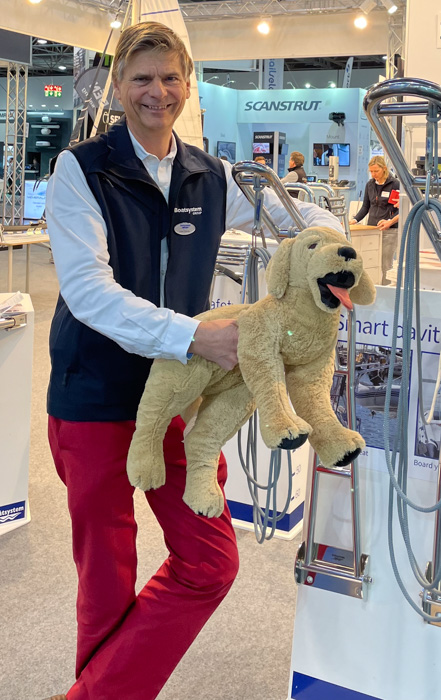
Wearing red Captain Currey’s at boot Düsseldorf at the Gotthardt stand
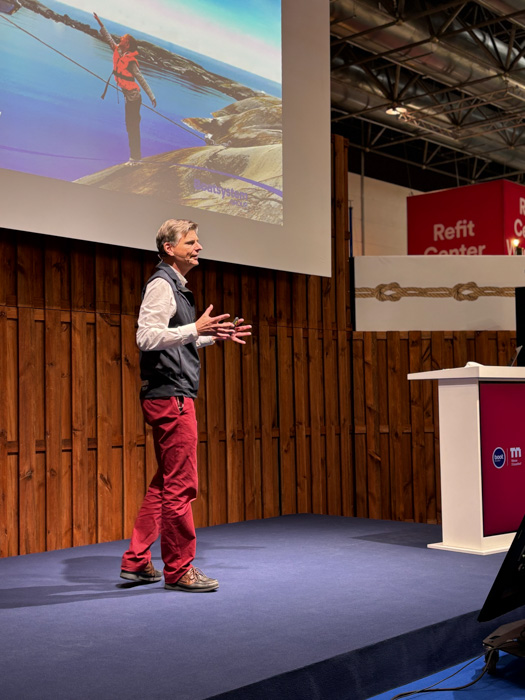
On stage holding talks.
It is true, I do keep wearing these at marine occasions, such as at boat shows, Royal Yacht Clubs, when holding talks and also when privately dressing casually smart when I wish to highlight my commitment to sailing in style.
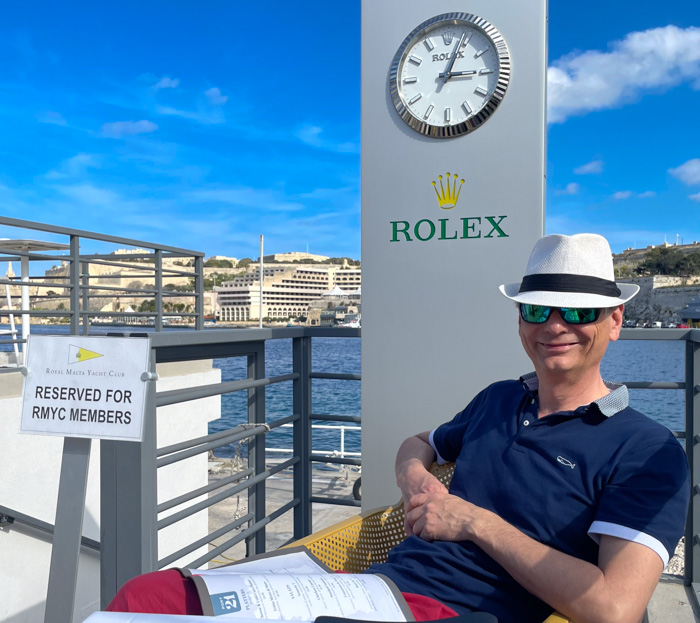
Casual clothing at the Royal Malta Yacht Club.
These are the famous original “Cowes Trousers”, made by the British company Captain Charles Currey Ltd. These Breton Red Canvas trousers are renown worldwide and worn by sailors who appreciate a modest understatement of their affiliation to yachting in style. A humble piece of clothing made of the highest of quality, only known to a small group of yachtsmen. It’s a bit like sailing a quality sailing boat, such as a Hallberg-Rassy, where the truth lies embedded far underneath the blue stripe on the hull.
.
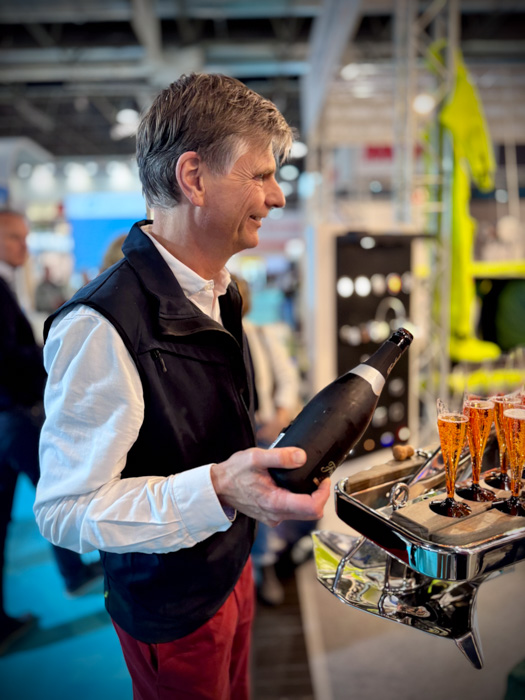
Time for champagne!
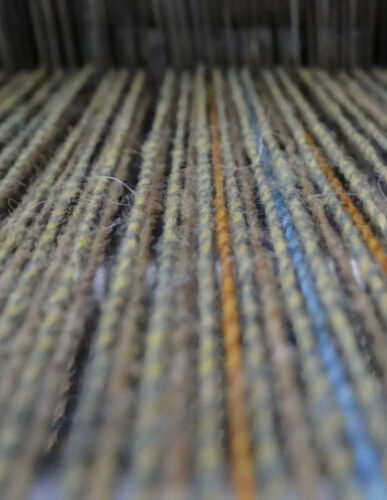
The company weaves its own cotton and woollen cloth, which is made into technical clothing for yachtsmen worldwide. They do not look any special, nor are they intended to be any special, yet they let the wearer feel he belongs to the humble alliance of true sailors. They are just the kind of basic garment that any Yachtie would wear in his shore time.

Getting ready for the RYA Yachtmaster Ocean Theory course in Malta.
.
Just as they have built boats on Orust in Sweden for thousands of years, Captain Currey trousers have a marine history to be proud of. An ordinary sailor might see these trousers as just any pair of (red) trousers, just like some see Hallberg-Rassy boats just as one type of boat. But it is worth digging under the gelcoat to discover the true strength of a brand.
Or, as Magnus Rassy keeps saying: His boats are not expensive, they just cost a lot of money!
These trousers keep a tradition and marine history alive with four generations of the Currey family I would now like to write about.
.
Who was Captain Charles Currey CBE R.N ( 1890-1973)? He was a renowned dinghy sailor in both 12 foot Nationals and in his 12 Sq M Sharpie ” Chuckles ” K 63 which was the 2 handed 1956 Olympic boat in Melboune. He had a long and distinguished naval career during the first half of last century and was a founding member of the Royal Naval Sailing Association ( RNSA ) in 1936.
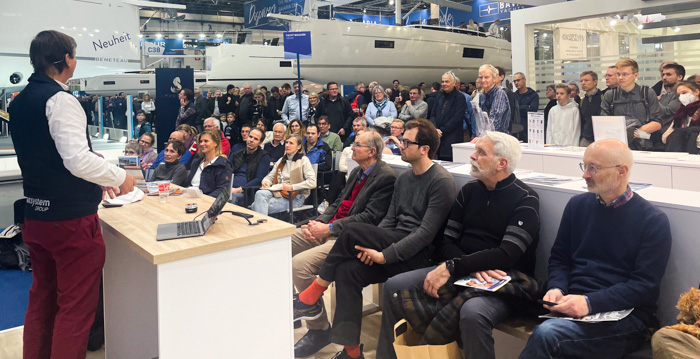
Holding talks wearing the red Captain Currey trousers at boot Düsseldorf already meany years ago.
.
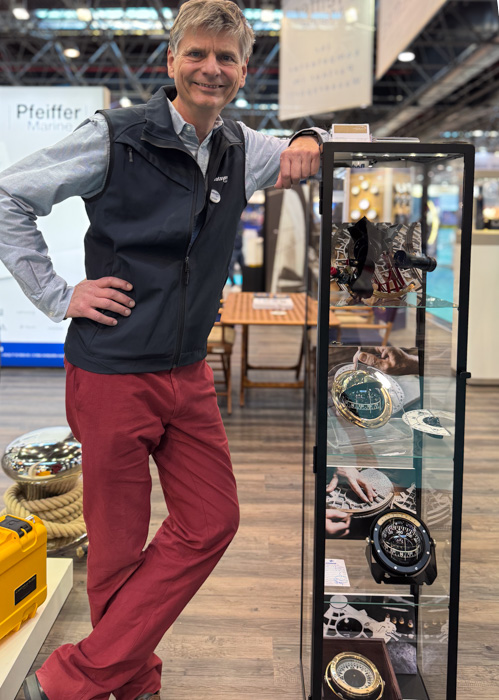
I buy my trousers “unfinished” so that they fit my long legs and are then tailor finished to fit exactly! Here, next to sextants and compasses which fit so well into the legend of sailing.
Captain Currey’s Naval appointment in 1936 was electrical officer at HMS Vernon and by 1939 was officer in charge of the Naval division called ” Rendering Mines Save ” ( RMS ). His mostly volunteer officers and men defused both impact and magnetic mines. This was an extremely dangerous job with many awards of the George Cross and George Medal being given to his officers and sailors. Magnetic mines meant none magnetic tools needed to used when disarming by withdrawing the detonators. These specialist tools became in 1946 the Currey Lockspike stainless steel knife.
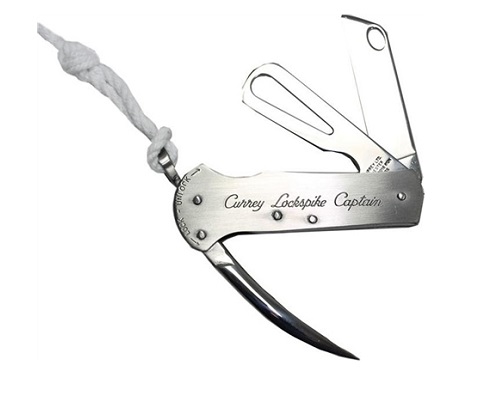
Sailors quickly discovered this high-quality stainless steel Lockspike knife and used them onboard their yachts. It’s nothing less than any mariner’s Letherman and sailors around the world are very often seen carrying an original Captain Currey Lockspike Knife in their pocket. Soon the knife was followed by rigging kits and finally the famous trousers and smocks.
.
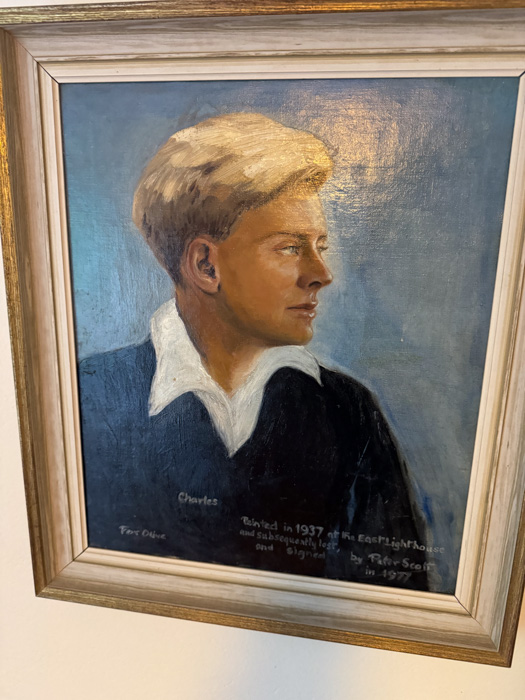
His son, Lt Comdr Charles II (1916-2010), was no less of a sailor, being born into this very marine family. While he did intend to follow a naval career he was invalided from the Navy in 1933 , he, maybe luckily, chose to be a naval architect, a boat builder and a sailor. When war came in 1939 he joined the Royal Naval Volunteer Reserve and spent the war in Coastal forces Motor Torpedo and Motor Gun Boats stationed either at Portsmouth or in the Orkney island. After the war he adapted the Fairey Aviation factory on Southampton Water to make approximately 20,000 hot moulded boats between 1946 and 1965.
.
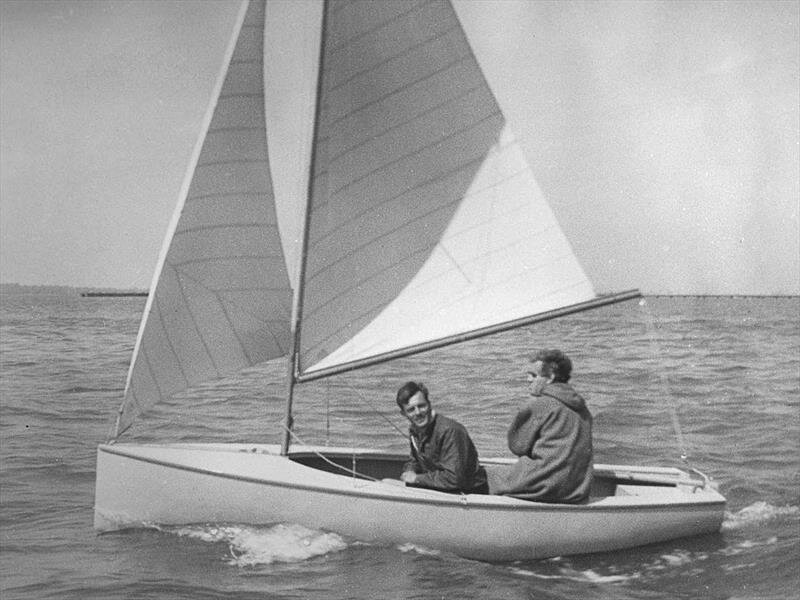
The Fairey Firefly had a jib and was originally intended for two. In the Olympics 1948 it became a single handed racing boat.
.
He raced is own 14 International dinghies, which was problematic in the beginning due to the fact that “professionals” were not allowed in the Olympics, which was kept for “amateurs”. A boat builder was obviously a professional, so it took until 1950’s until he and other “professionals” were allowed to race in the Olympics.
.
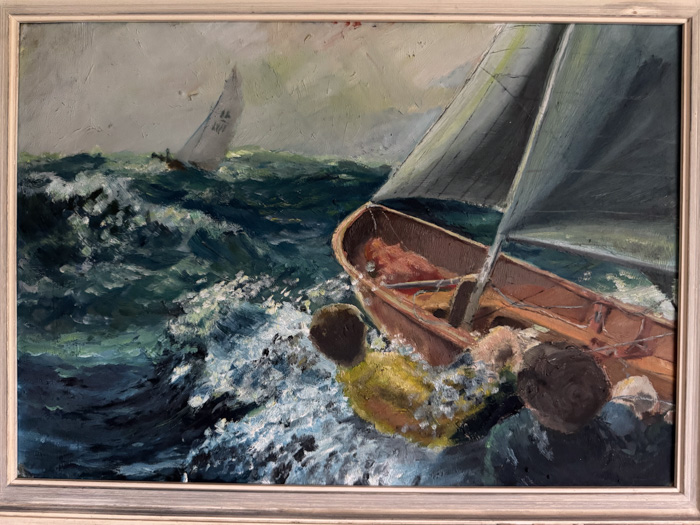
Racing in a hot moulded Charles Currey designed 14 International dinghy in 1959.
The same luck was shared with the designer of the new Finn dinghy that quickly replaced the Firefly for the 1952 Olympics. The designer of the Finn was the Swede Richard Sarby, who originally was a hair dresser. With the changing Olympic rules, the Swedish boat designer was equally allowed to sail his own Finn design in the Olympics, just like the boat builder Charles Currey from England, who interestingly enough, actually had built the prototype of the Finn at his Fairy boat yard.
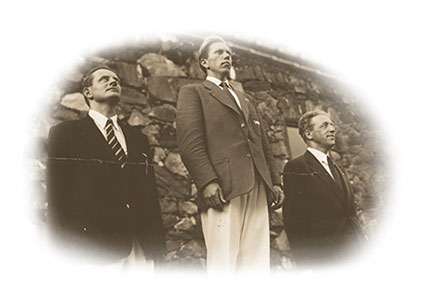
From right to left: Boat builder Charles Currey II (UK, silver), young and future legendary sail maker Paul Elvstrøm (DK, Gold) and boat designer Richard Sarby (SE, bronze) at the Olympics in Helsinki 1952
The outcome at the 1952 Olympics was dramatic: The maker of the Firefly, Dutchman and Finn, Charles Currey II, sailed against the legendary Paul Elvstrøm from Denmark, who already won the gold medal in the Fairy Firefly 1948. The third competitor was the actual designer of the new Finn dinghy, Richard Sarby form Sweden. What a dream time! And they all one a medal each: Gold went to the future sailmaker Paul Elvstrøm, who actually won four Olympics in a row, from 1948 to 1960 in Firefly and Finn. Silver went to Charles Currey II and bronze went to the designer of the Finn, Swedish Richard Sarby! The rest had simply no chance against these sailors!
You might see the red thread not only in the trousers but also in my choice of equipment? There is a personal relationship behind my choice of boat, sails and trousers!
.

Captain Charles Currey III onboard Regina Laska
.
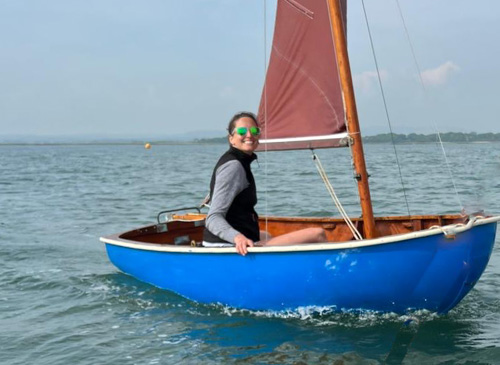
A new new generation of “Captains”: Louisa Currey is now the managing director with her father Charles (alias: Alistair) never further away than the main sheet of her Fairy Duckling dinghy, once built by her very granny and grandpa (Captain Currey II) in the 1950’s.
.
Today, the third generation Captain Charles Currey III, equally an Olympic sailor (Kiel 1972), is slowly passing on the tiller to the next generation. Att 77 years of age, he is still as active as ever in his business, while his daughter Louisa is becoming increasingly important in the company that her great-grandfather once started three generations earlier.
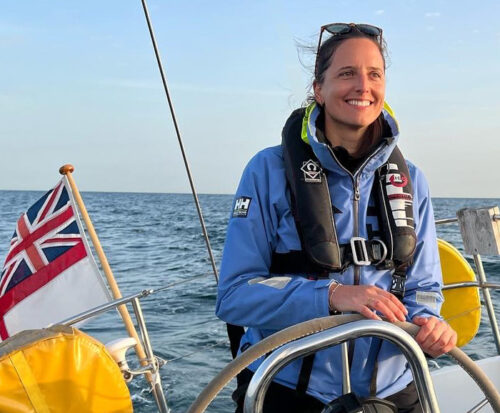
Captain Louisa Currey is now at the helm, not only when crossing the English channel as seen here, but steering the company her great-grandfather once started to new heights.
In 2025, Captain Charles Currey is celebrating 50 years of the manufacturer of the original Breton Red Crewman Canvas Trousers, worn by conscious mariners and yachtsmen. It’s an honour to wear these trousers, which actually come in more than one colour: further to the original Breton Red, you can also wear these crewman trousers in navy and sand colour, but it’s the Breton Red, which are also nick-named “Cowes Trousers”, which have made the company so famous.
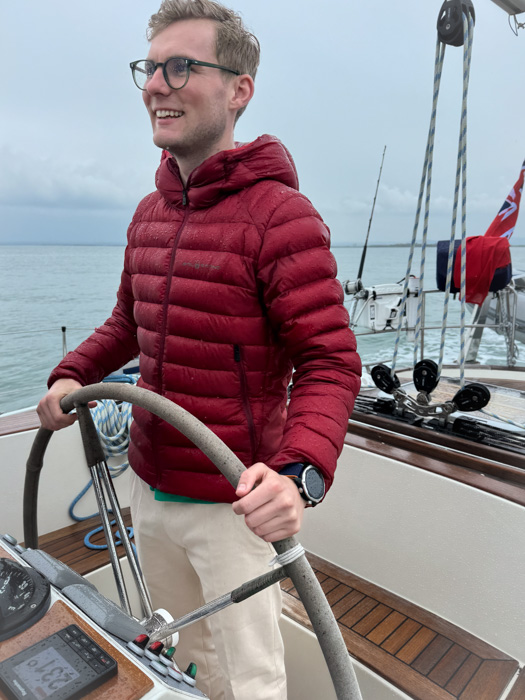
My son Jonathan sailing his father’s Hallberg-Rassy wearing nothing less than Captain Currey’s sand-coloured Crewman Trousers.
.
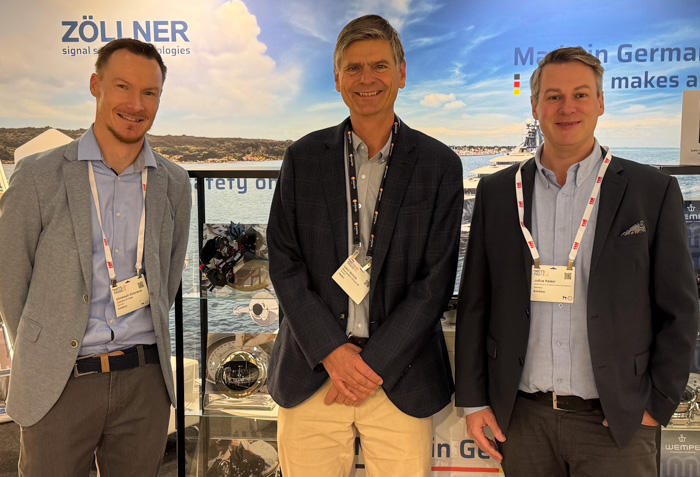
Wearing the sand Captain Currey trousers when meeting sextant manufacturer Cassens&Plath and Chronometer manufacturer Wempe, two equally traditional marine companies.
But why are they called Cowes Trousers? And what has it to do with crossing the Atlantic? Many claim that you may only wear the Breton Red Trousers if you have crossed this ocean and before you have done so, you may wear the navy or sand coloured ones. For sailors having sailed to or from the Azores may wear red shorts then?!

If you have sailed from the Azores, you may wear the red shorts, I joke!
.
Obviously, this is just bullshit and not true, but it does have a true story behind it, as so often!
The cowes trousers are so comfortable to wear, sort of shower-proof and so well made (and actually too well priced) that sailors used to wear them when sailing from England to the United States in the 1970’s – long before GPS but well into the times that sailing had become popular with an increasing number of sailors who actually did cross the Atlantic.
When the English arrived in the United States, many of them wore these red trousers they had just purchased in the chandlery of Cowes – the sailing Mecca in The Solent. To Americans, these smart-looking English sailors looked like wearing uniforms. And any British sailor arriving in the United States in red trousers were treated with great respect since they must have crossed the Atlantic, wearing these “Cowes Trousers”! And so they had!
In 2025 Captain Currey is celebrating 80 years since designing the legendary Lockspike Knife and 50 years of supplying Yachties with the famous Cowes trousers and it’s an honour to having had Captain Charles Currey (allies: Alistair) onboard Regina Laska outside his home in Chichester Harbour just a short sail from The Solent. 77 years of age, he is just as modest as his garments, when rowing in his little blue dinghy, hand-delivering a new set of red, sand and navy trousers to the crew of Regina Laska!
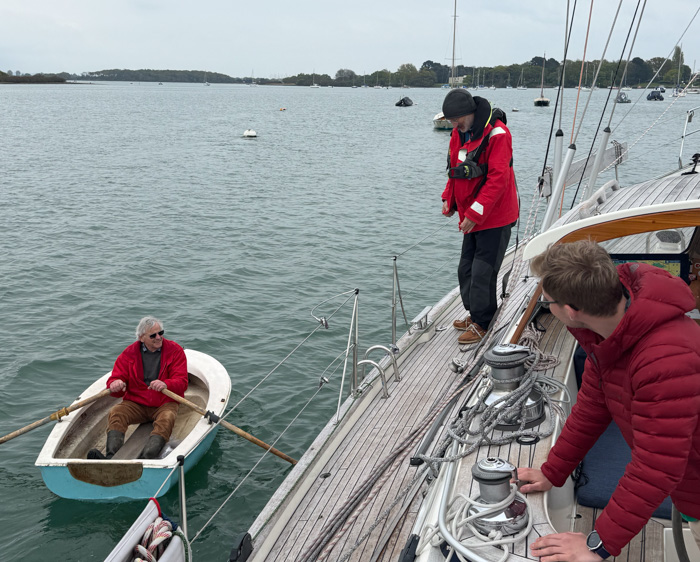
Famous visit with precious cargo onboard the dinghy: A new set of trousers for the Regina Laska Crew!
.
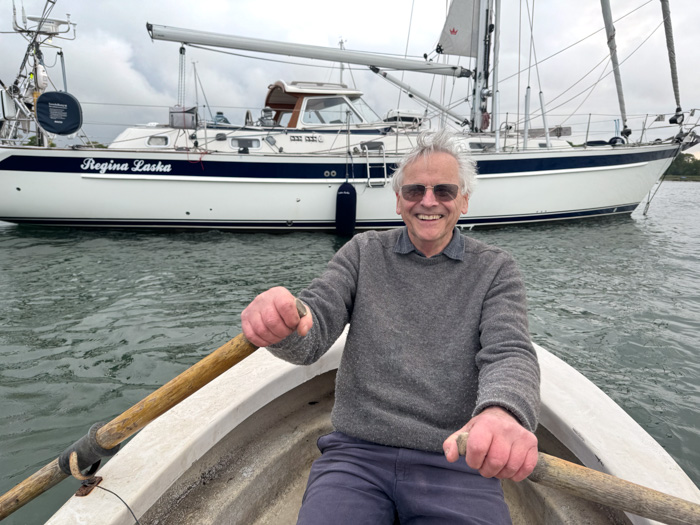
Captain Charles Currey III rowing his dinghy out to Regina Laska anchored in Chichester Harbour
.
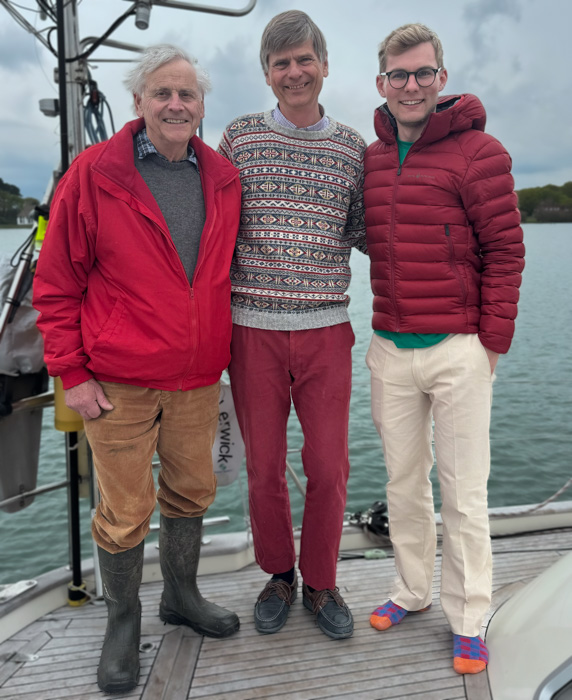
Trying on the new trousers: Alistair, Leon and Jonathan
